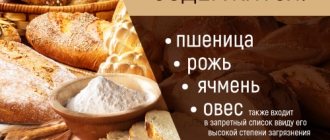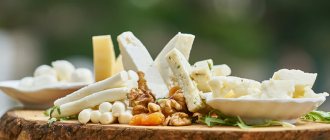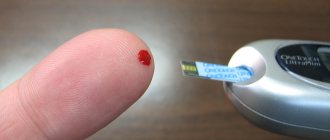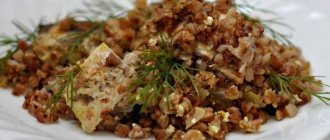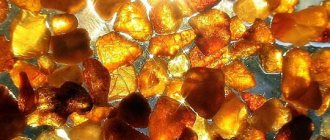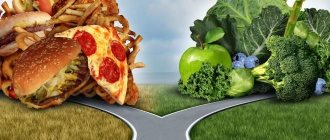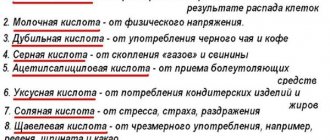Gluten-free diet - food list
Although gluten is safe for most people, people with conditions such as celiac disease or gluten sensitivity should avoid consuming it to prevent adverse health effects (1).
Many products are made with ingredients that contain gluten, so it is important that those who cannot consume it check ingredient labels carefully (2).
Here is a list of 54 gluten-free foods that you can include in your diet.
1-11. Whole grains
When purchasing whole grains, it is important to double check labels. Even gluten-free whole grains can be contaminated with gluten, especially if they are processed in the same facility as gluten-containing foods (3).
For example, oats are often processed in facilities that also process wheat, which can lead to cross-contamination. For this reason, you should make sure that the oats you purchase are certified gluten-free (4).
Gluten-Free Whole Grains:
- Quinoa
- Brown rice
- Wild rice
- Buckwheat
- Sorghum
- Tapioca
- Millet
- Amaranth
- Teff
- Arrowroot
- Oats
Grains to Avoid:
- Wheat, all varieties (whole wheat, bulgur, farro, farina, durum wheat, kamut, spelled, etc.)
- Rye
- Barley
- Triticale
These gluten-containing grains are often used to make products such as bread, baked goods, pasta, cereals, baked goods and snacks.
How to determine the absence of gluten in products?
To determine whether a product contains gluten or not, you need to carefully read its packaging. Manufacturers must include this information in product labeling.
If a product does not contain gluten, its packaging has a symbol with the corresponding inscription. A crossed out spikelet also indicates the absence of gluten. If the product is foreign-made, there is usually the inscription “gluten free products”. If you have it, you don’t have to worry about the product containing gluten. However, if the package says “may contain traces of gluten”, high molecular weight protein is present, but in small quantities. It is worth noting that people with gluten intolerance are also not recommended to consume such products.
Given the variety of gluten-free products, patients with celiac disease can arrange a fairly varied menu for themselves.
READ OTHER INTERESTING ARTICLES ON THE TOPIC
- Products containing gluten
- Gluten intolerance
- Why is gluten harmful?
12-26. Fruits and vegetables
The gluten free food list includes all fresh fruits and vegetables as they are naturally gluten free. However, some processed fruits and vegetables may contain gluten, which is sometimes added for flavoring or as a thickening agent (3).
Gluten-containing ingredients that may be added to processed fruits and vegetables include:
- hydrolyzed wheat protein
- modified food starch
- malt
- maltodextrin
Fruits and vegetables you can eat:
While the list below is not exhaustive, it does provide some examples of fresh fruits and vegetables that you can use in your gluten-free diet.
- Citrus fruits, including oranges and grapefruits
- Bananas
- Apples
- Berries
- Peaches
- Pears
- Cruciferous vegetables, including cabbage, cauliflower and broccoli
- Green leafy vegetables such as spinach, kale and chard
- Starchy vegetables such as potatoes, corn and eggplant
- bell pepper
- Mushrooms
- Bulb onions
- Carrot
- Radish
- Green bean
Fruits and vegetables to double check:
- Canned fruits and vegetables : Canned with sauces that contain gluten. Fruits and vegetables canned in water or natural juices are probably gluten-free.
- Frozen fruits and vegetables : Sometimes contain added flavors and sauces that contain gluten. Frozen fruits and vegetables without additives are gluten-free.
- Dried fruits and vegetables : may contain gluten-containing ingredients. Regular, unsweetened dried fruits and vegetables are gluten-free.
- Pre-cut fruits and vegetables : May be cross-contaminated with gluten depending on where they were prepared.
Gluten Free Products Chart
For those who need to introduce gluten-free products into their diet, a complete list of products is presented in the table.
| Product group | Product Name |
| Beverages | Natural coffee, tea, sparkling water |
| Dairy products | Cream, sour cream, milk, yogurt, cottage cheese |
| Meat, fish, poultry | Fresh meat, poultry, fish, as well as dishes made from them, prepared using natural products |
| Eggs | Chicken and quail |
| Cheeses | Swiss, Parmesan and other natural products |
| Potato | White and sweet |
| Flakes | Rice based popcorn |
| Flour products | Baked with gluten free flour |
| Vegetables | All types of vegetables that are not pre-processed, including frozen |
| Fruits and berries | Dried, fresh, canned and frozen fruits and berries without processing |
| Fats | Vegetable and butter, margarine |
| Nuts | Walnuts, peanuts, cashews, hazelnuts and other types that have not undergone industrial processing |
| Soups | Any first courses prepared from permitted products |
| Porridge | Millet, buckwheat, corn |
| Dessert | Crisps, gluten-free flour cakes, mousses, popsicles (natural), rice pudding |
| Sweets | Natural jams, preserves, chocolate, syrups, honey |
| Seasonings | Herbs, pepper. Salt, ginger, cloves, vanillin, natural tomato paste |
Gluten-free products presented in the table must be included in the diet of patients with celiac disease.
27-32. Squirrels
Many foods contain protein, including animal and plant products. Most are naturally gluten-free (3).
However, gluten-containing ingredients such as soy sauce, flour and malt vinegar are often used as fillers or flavorings. They can be added to sauces, dressings and marinades, which are usually combined with protein products.
Gluten Free Protein Products:
- Legumes (beans, lentils, peas, peanuts)
- Nuts and seeds
- Red meat (fresh beef, pork, lamb)
- Poultry (fresh chicken, turkey)
- Seafood (fresh fish, scallops, shellfish)
- Traditional soy products (tofu, tempeh, edamame, etc.)
Protein foods to double check:
- Processed meat products, such as sausages, sausages, semi-finished products (dumplings, cutlets, etc.), sausage and bacon
- Meat substitutes such as vegetarian products
- Ground meat
Protein foods to avoid:
- Any meat, poultry or fish that has been breaded
- Protein products to which wheat-based soy sauce has been added
- Seitan
Gluten-free flour
People with gluten intolerance should not despair and completely exclude flour products from their diet. You just have to choose the right flour for preparing them and you can continue to enjoy delicious baked goods.
Today the following types of gluten-free flour are known:
- rice
- often used in oriental cuisine, contains silicon, biotin and other valuable components; - corn
- this flour contains bran, which gives ready-made dishes a pleasant taste and aroma, contains a lot of vitamin B, fiber, carotene; - Buckwheat
is perfectly absorbed by the human body and is low in calories.
In terms of physical properties, gluten-free flour is not very different from a product with gluten, but it is more beneficial for the human body. Based on this flour, you can knead different types of dough: lean, yeast, puff pastry. Ready-made flour products are low in calories.
33-39. Dairy
Most dairy products are naturally gluten-free. However, dairy products with added flavors and additives should always be double checked for gluten (3).
Some common gluten-containing ingredients that may be added to dairy products include thickeners, malt, and modified food starch.
Gluten-free dairy products:
- Milk
- Butter and ghee
- Cheese
- Cream
- Cottage cheese
- Sour cream
- Yogurt
Dairy products to double check:
- Flavored milk and yoghurts
- Processed cheese products such as cheese sauces and processed cheese
- Ice cream that is sometimes mixed with gluten-containing additives
Diet for celiac disease
Many patients, having learned about the diagnosis of celiac disease, believe that now they will have to strictly limit themselves for the rest of their lives, eating monotonous, tasteless food. This is a common misconception. Of course, your diet should not contain foods high in gluten. But this does not mean that the menu will be monotonous and tasteless. The diet of people with individual intolerance to this element contains all the products from which you can prepare tasty, satisfying, varied dishes. They can use meat, poultry and fish, cereals, any vegetables, berries and fruits, dairy products, etc. in the menu. Root vegetables, greens, pumpkin and sunflower seeds, and flax seeds are excellent members of the diet for celiac disease. You need to include black rice and legumes in your menu. Manufacturers of special gluten-free products provide significant assistance to people suffering from celiac disease. The range of these products includes products for the everyday menu: bakery products and pasta. Lovers of confectionery and even sweets can pamper themselves. For housewives who love to bake, brands offer several types of flour that successfully replace the traditional wheat counterpart. Medical experts recommend that patients with gluten intolerance eat a varied diet. This will not only allow you to have fun, but will also ensure a high-quality supply of the required vitamins and minerals, and provide excellent conditions for the functioning of systems and organs. A guideline can be a diet developed by nutritionists.
40-44. Fats and oils
Fats and oils are naturally gluten-free. In some cases, gluten-containing additives may be mixed with fats and oils for flavoring and thickening.
Gluten-free fats and oils:
- Butter and ghee
- Olives and olive oil
- Avocado and avocado oil
- Coconut oil
- Vegetable oils, including sunflower oil, sesame oil, corn oil, and canola oil
Fats and oils to double check:
- Oils with added flavors or spices
- Spreads
Some gluten-containing products from well-known brands - more than 20 ppm gluten
| Brand | Products |
| Danone |
|
| El Pro | organic corn bread |
| Valio | lingonberry yogurt with prunes |
| Safonovokhleb | Lu-lu light snacks with vanilla |
| Service-Cold | ice cream ice cream Family |
| Erconproduct | condensed milk with cocoa, dairy-vegetable product |
| CampoMos | Doctor's sausages |
| Wimm-Bill-Dann; MK "Baltic Milk" | Curd cheese Red Up with boiled condensed milk |
| Nordic | rice flakes |
| Nescafe | granulated instant coffee Nescafe classic and gold |
| Jacobs | granulated instant coffee |
45-51. Beverages
The list of gluten-free products includes gluten-free drinks. There are several types of gluten-free drinks that you will enjoy.
However, some drinks are mixed with additives that contain gluten as an ingredient. Additionally, some alcoholic beverages are made using malt, barley, and other grains that contain gluten and should be avoided during a gluten-free diet (5).
Gluten-free drinks:
- Water
- 100% fruit juice
- Coffee
- Green tea or black tea
- Some alcoholic beverages, including wine, ciders and beer, made from gluten-free grains such as buckwheat or sorghum
- Sports, carbonated and energy drinks
- Lemonade
Please note that while these drinks are gluten-free, most are best consumed in moderation due to the added sugar and alcohol content they contain.
Drinks to double check:
- Any drink with added flavorings or adulterants, such as coffee coolers
- Distilled liquids such as vodka, gin and whiskey, even if they are labeled "Gluten Free" as they are known to cause a reaction in some people
- Pre-mixed cocktails
Drinks to avoid:
- Beer, ale and lager made from grains containing gluten
- Undistilled liquids
- Other malt drinks
List of gluten-free products
The list of gluten-free products includes:
- baked goods with gluten-free flour;
- buckwheat porridge;
- quinoa;
- millet;
- corn;
- natural dairy products (milk, kefir, cottage cheese and others);
- natural meat and fish;
- cheese;
- rice;
- vegetable oil without processing;
- distilled vinegar;
- eggs;
- various types of distilled alcoholic beverages;
- food starch;
- potato flour;
- coconut, as well as coconut milk;
- lactic and malic acid;
- natural spices;
- vanillin;
- nuts, seeds without processing.
The list of gluten-free products is quite wide to make your menu varied. Patients with celiac disease can easily choose a diet consisting of healthy ingredients.
52-54. Spices, sauces and seasonings
Spices, sauces and seasonings often contain gluten.
Although most spices, sauces and seasonings are naturally gluten-free, gluten-containing ingredients are added to them as emulsifiers, stabilizers or flavor enhancers.
Some common gluten-containing ingredients added to spices, sauces and seasonings include:
- modified food starch
- maltodextrin
- malt
- Wheat flour
Gluten Free Condiments, Sauces and Condiments:
- Tamari sauce
- Coconut sauce with amino acids
- White vinegar, distilled vinegar and apple cider vinegar
Spices, sauces and seasonings to double check:
- Ketchup and mustard
- Worcestershire sauce
- Tomato sauce
- Seasoning and pickles
- Barbecue sauce
- Mayonnaise
- Salad dressing
- Tomato paste
- Dry spices
- Salsa sauce
- Bouillon cubes
- Marinades
- Rice vinegar
Spices, sauces and condiments to avoid:
- Wheat based soy sauce
- Teriyaki sauce
- Malt vinegar
LIST OF PRODUCTS CONTAINING GLUTEN
- The following grains contain gluten:
Wheat, rye, barley, spelt, kamut, spelled, triticale, durum. People with gluten intolerance should not consume these grains in any form, including sprouts. In Russia, hidden gluten is also found in oats. In other countries, you can find oats and oat flour labeled as gluten-free.
- All products from the above grains also contain gluten:
Wheat and oat flour, pasta, bakery and confectionery products (except for those with special o), bran, barley malt, brewer's yeast, pearl barley, barley, semolina, corn flakes and sticks.
Read about substitutes for these products on the page Special products for a gluten-free diet .
- Sauces
Almost all types of sauces contain wheat, which means they are absolutely contraindicated for people on a gluten-free diet. Ketchup, mayonnaise and mustard contain flour as a thickener, and soy sauce is made from wheat (as stated directly in the ingredients). But there are 3 types of soy sauces that are made specifically gluten-free: Read more about gluten-free soy sauces.
Please note that not only ready-made sauces contain gluten, but also those prepared in restaurants, visiting relatives and friends, since wheat flour is a classic thickener for almost all types of sauces.
- Condensed milk
All types of condensed milk contain wheat flour as a thickener, meaning they contain gluten.
- baking powder
Baking powders and baking powders contain wheat flour, that is, obvious or hidden gluten.
Ingredients to Avoid
Here is a list of ingredients and food additives that may indicate that a product contains gluten:
- Modified starch and maltodextrin (if made from wheat, this will be stated on the label)
- Malt ingredients including malt vinegar, malt extract and malt syrup
- Stabilizers
- Soy sauce or teriyaki
- Wheat ingredients such as wheat protein and wheat flour
- Emulsifiers (will be listed on the label)
If you are unsure whether a product contains gluten, it is recommended that you contact the manufacturer to check.
Gluten containing products
A gluten-free menu is a lifelong diet for patients with celiac disease. The list of gluten-containing products is huge, and new products are added every day. These products are not always labeled with gluten content, so you should know them by heart or have this list on hand.
Gluten-containing products with obvious or hidden gluten content | Medicines containing gluten: |
Prohibited food additives:
|
|
Summarize
- If you're avoiding gluten, there are many foods you can choose from to create a balanced diet.
- Many healthy foods are naturally gluten-free. These include fruits, vegetables, fresh meats, fish and poultry, legumes, some whole grains, dairy products and oils.
- Wheat, rye and barley are the main foods to avoid when following a gluten-free diet. Gluten is also commonly added to processed foods such as canned and packaged foods.
- Additionally, some grains, such as oats, may be cross-contaminated with gluten, depending on where they were processed.
- A successful gluten-free diet comes down to double-checking the ingredients in your foods, as gluten is often added to foods you wouldn't expect to find it in. Products containing gluten will be labeled as such.
- However, if you focus on eating mostly fresh, whole, gluten-free foods and minimal processed foods, you will have no problems with a gluten-free diet.
Gluten-free diet, Gluten
Foods that may contain hidden gluten
- Finished products and semi-finished products;
- Frozen food;
- Sausage, ham, pate and other industrially processed meat products;
- Crab sticks and other seafood, frozen or industrially processed (including smoking);
- Starch, modified starch, peptized starch, maltose;
- Vegetable protein;
- Various confectionery toppings, confectionery decorations, icing, powdered sugar, baking powder (except soda);
- Dried fruits;
- Marinades, canned food;
- Dairy products and cheeses;
- Ice cream, whipped cream, desserts;
- Chocolate, candies, sweets;
- Juices (all except freshly squeezed), compotes, fruit drinks, nectars, lemonades;
- Ground spices, yeast, gelling mixtures;
- Dry mixtures, concentrates and powders for preparing drinks (cocoa, instant coffee, etc.);
- Baking mixes not labeled as gluten-free;
- Gluten-free cereals or mixed cereals, muesli, not labeled as “gluten-free”;
- Syrups, vinegar, milk and cream of non-animal origin;
- Bouillon cubes;
- Vegetable resin, chewing gum;
- Various aromatic extracts, including those of plant origin;
- Artificial colors, caramel colorings;
- Flavors, including natural, caramel flavors.
This is an approximate list of products that may contain gluten. People with celiac disease and gluten intolerance should completely avoid foods containing gluten and preferably not consume foods on the list of hidden gluten. Especially for celiac disease!
You can read about what special gluten-free products are sold in stores in the section “Special products for a gluten-free diet”, and you can find information about the sale of special gluten-free products in different cities in the section “Gluten-free cities”.
↑ Gluten-free diet for children
Celiac disease in children can be detected immediately after breastfeeding ends. The disease is accompanied by vomiting, colic, diarrhea, and loss of appetite. Low body weight, slow growth and delayed physical development are observed. A correct diagnosis can only be made using a blood test. If the result is positive, then a gluten-free diet will become an integral part of the baby’s life.
To prevent gluten from entering the child’s body, parents must adhere to important rules:
- Gluten-free foods should be stored in a separate cabinet (not on a separate shelf).
- It is necessary to provide the child with separate dishes and kitchen utensils.
- It is not recommended to prepare food for the baby and the rest of the family at the same time, since you may forget to wash your hands after using a prohibited product.
- First, they take a sample from the children's dish, and only then from the general dish.
- Prohibited products should be stored out of the reach of children.
- You should not store industrial sweets at home.
- You should not give your baby questionable products.
- You should not combine a product that is new to your child with familiar ones in order to identify possible intolerance.
↑ Gluten-free diet for weight loss
Gluten (gluten) is a plant protein that is insoluble in water. Contained in cereals (rye, barley, millet, wheat) and products made from them (ketchup, mayonnaise, chips). With excessive consumption of such foods, the intestines cannot process all the gluten. As a result, it is deposited on the walls of the stomach in an undigested form, damaging them and poisoning the body with decay products. As a result, health deteriorates and weight begins to increase. Eliminating gluten from the diet restores metabolism, improves digestion and cleanses the intestines, which promotes rapid weight loss (up to 4 kg per week).
Sample gluten-free menu for the week
1 day
- Breakfast: cottage cheese dessert with natural fruits, honey, rice cakes, natural cocoa.
- Lunch: baked fish with herbs, mashed potatoes, green salad, berry compote.
- Afternoon snack: lean corn flour bun, natural jam, natural coffee with milk.
- Dinner: millet porridge, kefir.
Day 2
- Breakfast: rice porridge with fresh berries, almond flour bun, natural coffee with milk.
- Lunch: meat borscht or cabbage soup.
- Afternoon snack: rice or cornbread, fruit salad.
- Dinner: buckwheat porridge with goat milk, soy bread.
Day 3
- Breakfast: cheese omelet, corn tortilla, cocoa.
- Lunch: chicken broth, buckwheat pancakes with meat.
- Afternoon snack: banana, tea.
- Dinner: stewed vegetables with sour cream, freshly squeezed juice.
4 day
- Breakfast: corn flakes with milk.
- Lunch: fish soup with boiled egg, stewed beans.
- Afternoon snack: baked apple with nuts.
- Dinner: cottage cheese casserole with rice flour, tea.
5 day
- Breakfast: pancakes made from a mixture of rice and corn flour, cocoa.
- Lunch: creamed cheese and spinach soup, tomato and cucumber salad, boiled breast.
- Afternoon snack: boiled egg, berry juice.
- Dinner: Baked vegetables with cheese, tea.
Day 6
- Breakfast: rice and boiled fish, tea with milk.
- Lunch: meat broth and meatballs, steamed vegetables.
- Afternoon snack: fruit juice jelly, buckwheat bread.
- Dinner: buckwheat porridge and boiled meat, tea.
Day 7
- Breakfast: low-fat cottage cheese, cocoa.
- Lunch: vegetable soup, baked fish in milk sauce.
- Afternoon snack: muesli of nuts, apple and rice flakes, tea.
- Dinner: vegetable stew
